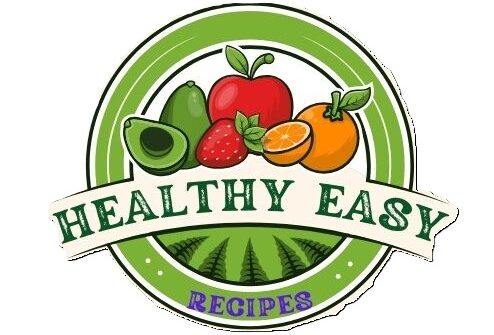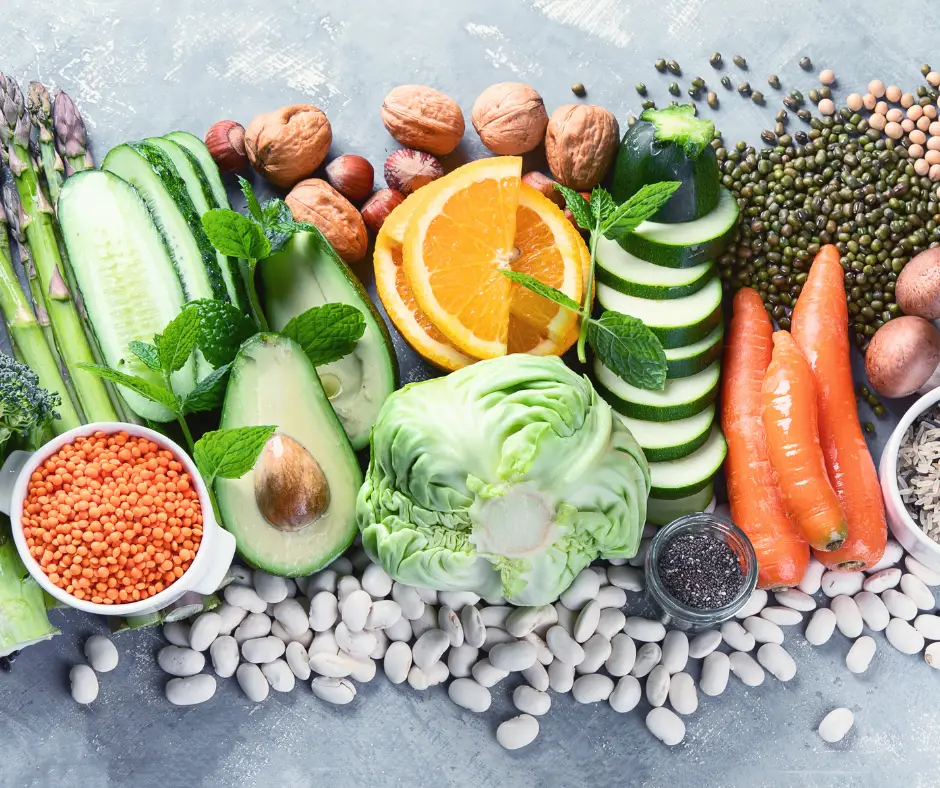7-Day Vegan Meal Plan: Simple & Easy Plant-Based Recipes You’ll Love
This 7-Day Plant-Based Plan for beginners includes easy and delicious breakfast, lunch, and dinner recipes.
This Plant-Based Diet Menu For A Week aims to help you enjoy cooking more plant-based meals at home without spending too much time in the kitchen. The recipes are simple and delicious.
What is a plant-based diet?
A plant-based diet is precisely what it sounds like. Plant food includes vegetables, fruits, seeds, legumes, nuts, and whole grains.
A plant-based diet isn’t a vegetarian diet; you can eat poultry, hamburgers, eggs, fish, and dairy items, but most of your supplement intake comes from plant-based food sources. There is no set proportion of plant-to-creature food sources on a plant-based diet; however, something like two by the third plate of food (or feast) you eat is an effective method for a beginning. The most focus must be on plants.
Related: 10 Plant Based Diet Breakfast
Veganism Is Not a Plant-based Diet!
Veganism supports the expulsion of all animal products from one’s life. A vegetarian diet prohibits meat, fish, eggs, honey, and dairy. But following a plant-based diet doesn’t mean that one is vegetarian. In the past five years, veganism has become very common. There are 75 million vegetarians around the world, 0.1 percent of the worldwide population.
As Toledano says, “If you want to follow a plant-based diet, think of it as a lifestyle change, not a diet; this mindset can help lead to health improvements, both physically and mentally.”
List Of Plant-Based Foods
While changing to a plant-based diet, dinners should revolve around plant-based food varieties.
Assuming that animal food varieties are eaten, they ought to be eaten in more modest amounts, with consideration paid to the nature of the thing.
Now let’s see a list of some plant-based foods that you must bring into your routine:
- Tofu, tempeh, and edamame: Soy items are one of the most extravagant protein sources in a plant-based diet. Tofu assumes the kind of dish it is ready with the goal that it tends to be a flexible addition to dinner. Individuals can have tofu in a most loved sandwich or soup as a meat substitute. Tofu is a well-known meat substitute in certain dishes, such as kung pao chicken.
- Lentils: Green or Red lentils include a lot of fiber, protein, and key supplements, including potassium & iron. Cooked lentils have 8.84 grams of protein per half cup. Lentils are an incredible source of protein to add to your food intake. They can be added to stews, curries, mixed greens, or rice to give an additional piece of protein.
- Chickpeas are high in protein, about 7.25 grams per half cup. They can be eaten cold or hot and are exceptionally adaptable, with many recipes accessible on YouTube. They can, for instance, be added to stews and curries or flavored with paprika and simmered on the stove. An individual can add hummus, which is produced using chickpea glue, to a sandwich for an energizing, protein-rich choice to butter.
- Peanuts: Peanuts are protein-rich, loaded with energizing fats, and may further better the health of your heart. They have about 20.5 grams of protein per half cup. Peanut butter is likewise wealthy in protein, with 3.6 grams per tablespoon.
- Almonds: Half a cup of almonds offers 16.5 grams of protein. They likewise contain a lot of vitamin E, which is perfect for the skin and eyes.
- Chia Seeds: Chia Seeds are low-calorie food sources that are wealthy in fiber and heart-sound Omega-3 unsaturated fats. Chia seeds are a finished wellspring of protein that contains 2 g of protein for every tablespoon. Put chia seeds into a smoothie, sprinkle them on top of plant-based yogurt, or to make a pudding soak them in water or almond milk. Chia seeds are accessible from certain stores or purchased online.
- Hemp seeds: Just as chia seeds are a complete protein, so are hemp seeds. Hemp seeds offer 5 grams of protein for every tablespoon. They can be utilized the same way chia seeds are. Hemp seeds can likewise be purchased online.
Related: What to eat on a Plant-Based Diet
What Are the Benefits of Choosing a Plant-Based Diet?
Lowers your blood pressure. Hypertension can increase the risk for medical problems, including coronary illness, stroke, and type 2 diabetes. Luckily, the food sources you eat can have an effect. A few investigations have shown that staying with a plant-based diet can lower blood pressure, decreasing your risk for those risks. An investigation discovered that vegans had a 34 percent lower chance of creating hypertension than nonvegetarians!
- Keeps the heart healthy. Meat contains saturated fat, which can contribute to heart issues when eaten in abundance. So, by scaling back meat and increasing your intake of plant-based foods, you’re helping your heart ticker out.
- It helps prevent type 2 Diabetes. Notably, there’s a connection between diet and type 2 diabetes. Weight is a significant gamble factor since more greasy tissue makes the cells more impervious to insulin, as indicated by the Mayo Clinic. Yet, which sort of diet is ideal for staying away from type 2 diabetes? Studies recommend that a plant-based diet has benefits.
- It helps in reducing weight. Plant eaters will often weigh less, regardless of whether that is the case all the time. Eating more plants can assist you with dropping pounds. A little report found that 65 overweight grown-ups who followed an entire food, plant-based diet for one year lost 9.25 pounds on average. Furthermore, this diet was not calorie-confined; the members could eat what they needed despite everything shedding pounds. One justification for the weight reduction is that whole grains and vegetables are moderately coming up short on the glycemic list — and that implies they’re processed all the more leisurely — and organic product contains cell reinforcements and fiber, which delays completion, as per research.
What Are The Risks Of Choosing A Plant-Based Diet?
Just the way the benefits of a plant-based diet are mentioned above, we are going to see some cons or risks of plant-based diets:
Presently, there are a few drawbacks to a plant-based diet way of life.
- Iron, calcium, and B12 supplement levels might be hard to keep up with, and these deficiencies are normal in people sticking to a plant-based diet. Read more about: What are B vitamins?
- Changing eating regimens can cause abnormal, secondary side effects, such as a harmful virus.
Related: Can you eat eggs on a Plant-Based Diet?
7-Day Vegan Meal Plan
Day 1
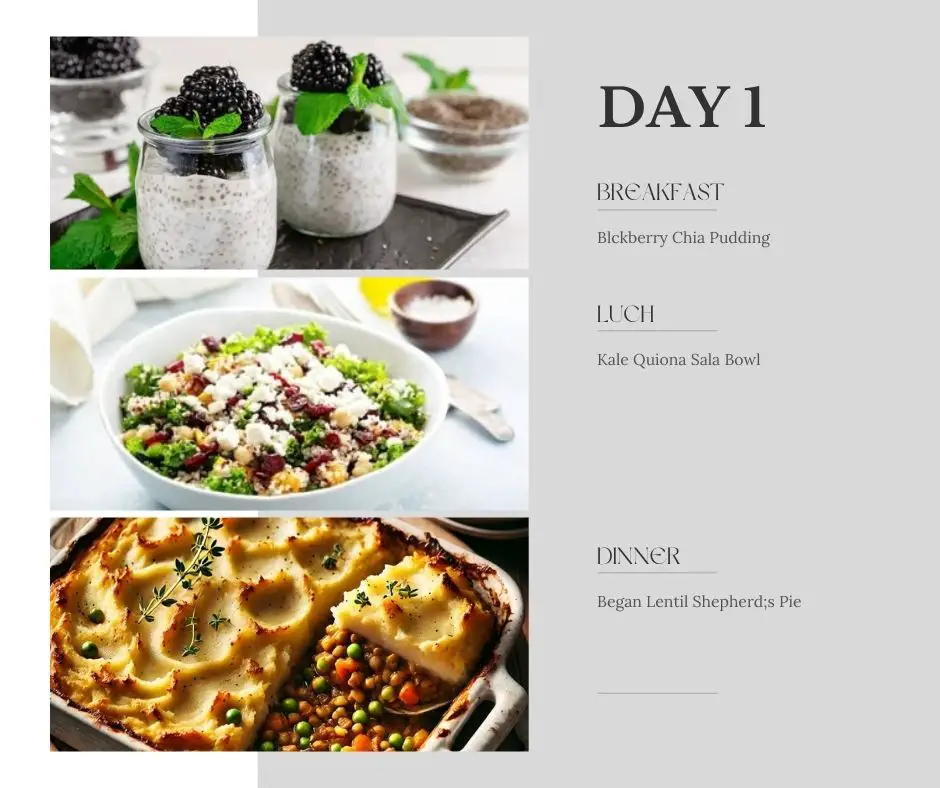



Day 2
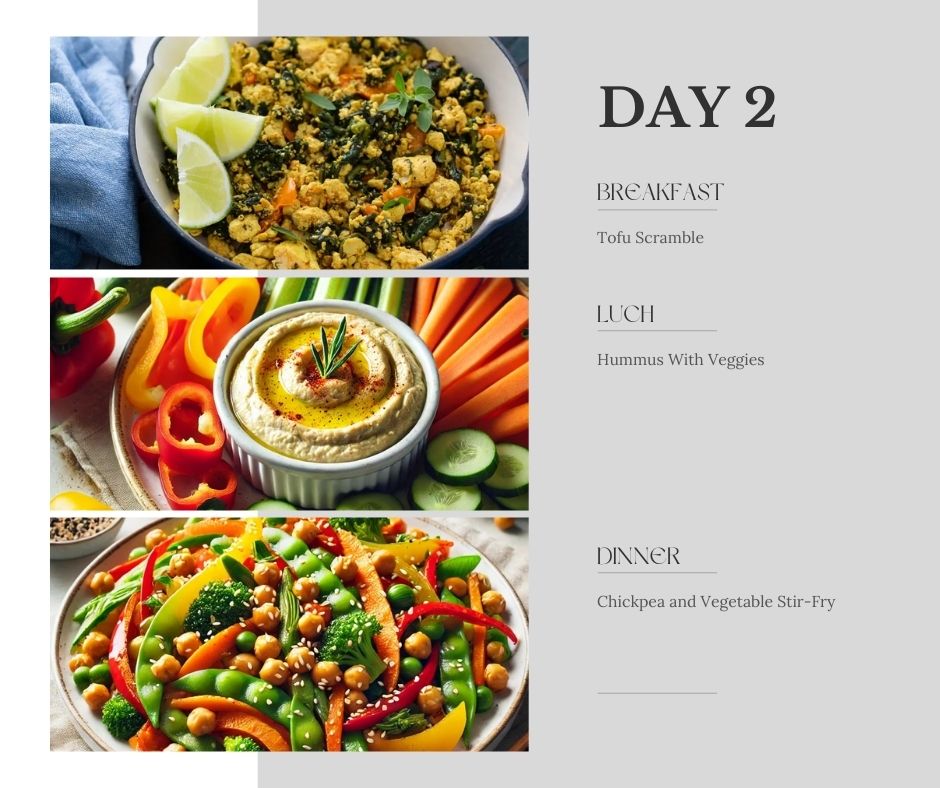



Day 3
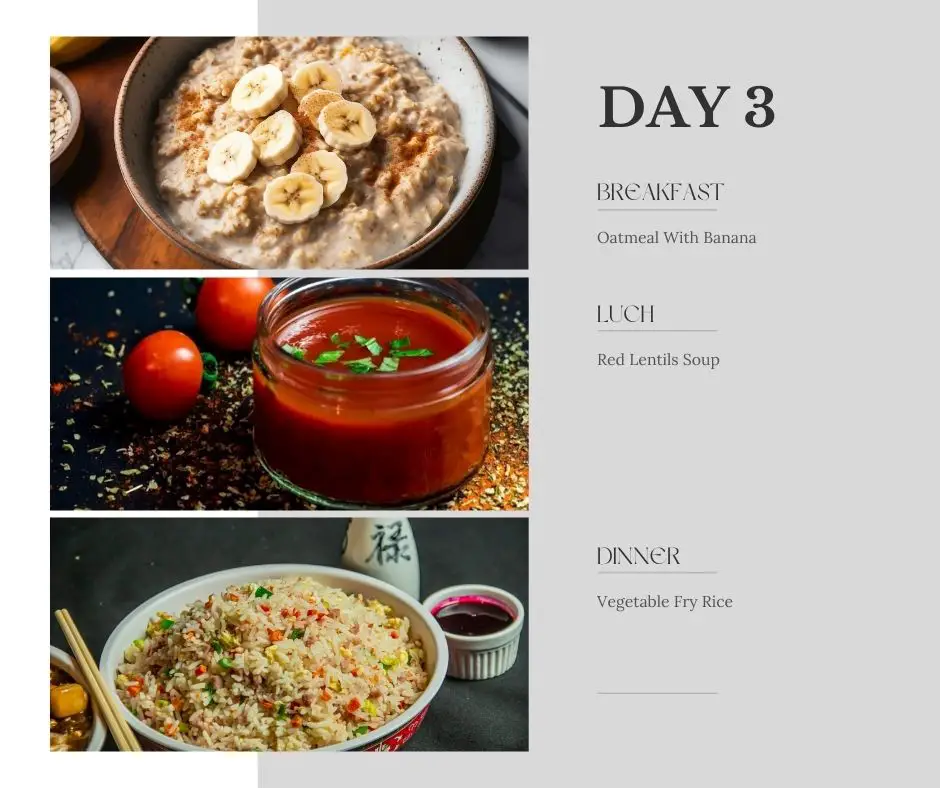

Ingredients:
- 1 cup of rolled oats
- 2 cups of water or almond milk (or your favorite plant-based milk)
- A pinch of salt
- 1-2 tablespoons of sweetener like maple syrup, agave syrup or date syrup (optional)
- Fresh fruits, nuts, and seeds for topping (like sliced banana, blueberries, chopped almonds, chia seeds, etc.)
Instructions:
- Bring the water or almond milk to a boil in a saucepan.
- Stir in the oats and a pinch of salt, then reduce the heat to low.
- Simmer the oats, stirring occasionally, for 10-20 minutes until they are the desired texture. If you like your oatmeal creamier, cook it for longer. If you like it chewier, cook it for less time.
- Stir in your sweetener of choice if using.
- Serve the oatmeal in bowls and top with banana slices.
This recipe serves 2 and can be easily adjusted for more servings. Enjoy!

Day 4




Day 5
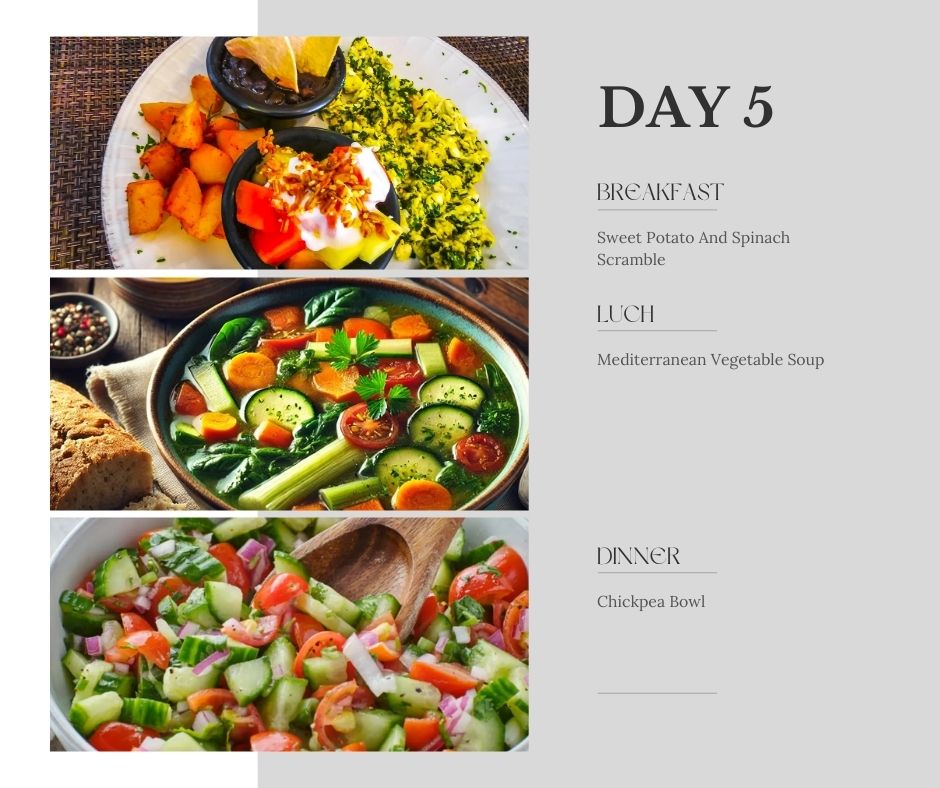



Day 6
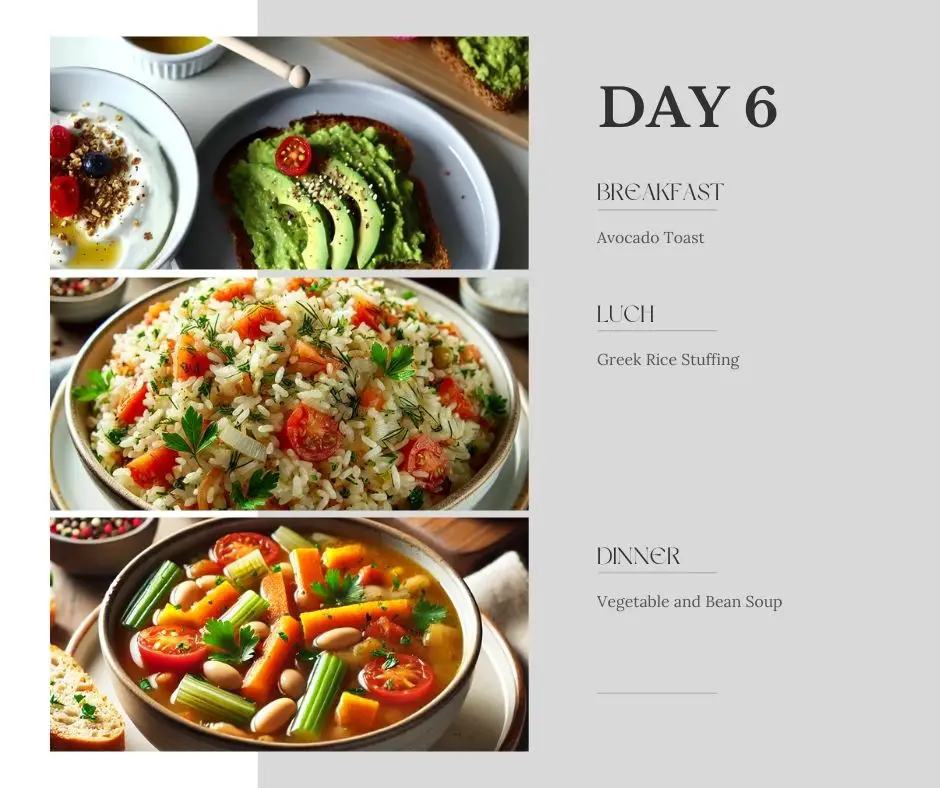



Day 7




Check 10 Easy & Fantastic Plant-Based Breakfast Ideas To Fuel You Up
Always consult with a healthcare professional before making any significant changes to your diet.
Find more plant-based recipes with a 14-day meal plan. With easy recipes that include breakfast, lunch and dinner, and nutrition facts like Spinach Tofu Scramble, Chickpea Salad Bowl, and Baked Brussels sprouts, With Rice at the Plant Based Diet Cookbook For Beginners: 42 Easy Recipes For Healthy Eating: 2-Weeks Meal Plan With Nutrition Facts
Read more about what is inside the book Plant Based Diet Cookbook For Beginners
